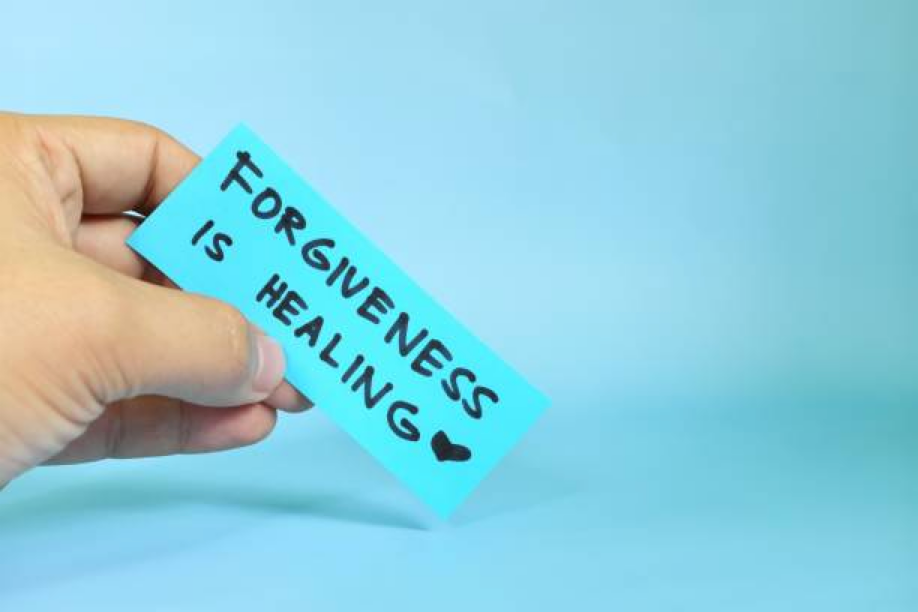Staff
Competency 10: Having Presence in the Present
Posted by Holy Family Counseling Centers Staff on April 20, 2020
“Let us not look back in anger, nor forward in fear, but around in awareness.” ~James Thurber
Do you ever look at someone’s feet when you are in conversation with them? Body language experts will tell you that if a person’s feet are oriented away from the person they are conversing with, they want to be gone from the conversation. If their eyes are fl itting towards exits, the same can be said. Have you ever noticed this? Have you ever done this, given subtle hints that you’d rather be somewhere else? Priestly vocation requires presence in the moment. The need for situational awareness and the ability to be still, even when we do not want to be, is a skill that can be developed.
The first step is remembering that Christ is always present for us. The True Presence is a foundation of our Catholic faith. May it also be a blueprint that we learn to live in our daily lives. To be truly present with those around us. This does not mean we need to give of ourselves to no end, rather we should develop and maintain boundaries to protect ourselves. Th is will allow us moments of communication and relationship where we relish the act of being present with ourselves, and with others.
A. Freedom is Where We Are
We have probably all had the experience of seeing a person walking up to us and we know what the conversation is going to be like. Sometimes that conversation will be exciting, other times it will be one we fi nd extremely boring. When we allow ourselves to be drawn in by the negatives, we lose our footing in the present. Reminding ourselves before a conversation to be present can allow us to handle the conversation more readily. This means acknowledging that we may not want to be here in the moment, and creating space to allow the conversation to occur, while also understanding that there can be a time limit where we are able to be present.
How do we set these boundaries? Multi-tasking gets a lot of headlines these days. The more things we are able to do at once, the better. Listening to a podcast while you jog, answering emails while on a conference call, eating dinner and binge watching a show, all are common occurrences for many of us. Multi-tasking has advantages and cannot be completely eliminated from our daily lives. However, the intent with which we multi-task can be explored. Research shows that when we multitask we focus less, regulate our emotions less, and forget important pieces of information. As a therapist I can freely admit that if I start multi-tasking in a session, usually by thinking about what I have to do next, I lose track of what a client is saying. I constantly remind myself that when I enter a session; I am going to be present with that person for the next hour and everything else goes by the wayside. My presence for that person is important and so I start monotasking. Monotasking is simply giving time to perform one task at a time. As I write this piece, I have set aside time to do just that. My goal to be present for this newsletter is where I am right now. I set aside this time, I reduced my distractions, and I am present, and therefore free, to complete this task.
A second way to be more present in our daily lives is to practice gratitude. Set aside a few minutes a day to contemplate the things you are grateful for. Did your football team win this weekend? Did an event get canceled and you had time to relax? Make a great shot in golf? The practice of gratitude is to pay attention to the little things as well as the big things. The more we practice gratitude the more we train ourselves to look for the positives in our daily lives. Finding gratitude in conversations with others, completing expense reports, sitting through meetings all become a little more positive when we have the intent to be grateful.
The last suggestion is to remember the difference between empathy and sympathy. This video by Brene Brown does an excellent job of breaking down the differences for us. Empathy is the ability to understand and share a person’s feelings, even if we are limited in our own experience of what they are going through. Sympathy is feeling pity or sorry for someone’s feelings; we feel bad for them without understanding what they are feeling. Sympathy is a more surface-level approach to dealing with a person or what they are bringing to you. Empathy forms a connection with an individual and requires us to access something in ourselves in order to connect with the other. To be more empathetic:
- Focus on what is being said, not what your response “should” be;
- Repeat in your own words what is being said;
- Be aware of your own emotions in the moment;
- Ask what the other person needs from you, don’t assume.
Practicing monotasking, gratitude, and empathy on a daily basis will assist you in being more present, feeling less stressed, and avoiding burnout. You will not get it perfect the first time out, so take the time to practice and become consistent.
B. Active Listening
A part of being a presence means being a reflection of Christ, who sought to call forth that which is good, true, and beautiful into the world, through both his action and his words. Active listening can be a good practice in which we are able to meet individuals where they are at. We can help them reflect on what is good, true, and beautiful in their life even as they struggle to uncover those transcendentals and reflect concerns constructively where we see their search might be hindered. There are three essential components to active listening: Body Language, Reflection, and Response.
1. Body Language is important in communicating your intentions and your presence to the one who is sharing their story with you. When trying to be attentive and focus on someone else’s story, there are four things to keep in mind.
- Make sure your body is oriented in the person’s direction, this helps show that your interest and your energy is focused on them.
- Have your eyes directed towards their face, this communicates that you are trying to be attentive to the person and the emotions that might be revealing themselves as he tells his story.
- Minimize obstructions. For example, if you are behind a desk, try to move to an area that is more open.
- An open posture also helps communicate your intention of being receptive.
Mastering positive body language can be helpful to communicate that intentional presence that you may wish to bring in situations where you would like to shine the love of Christ. However, caution is advised that body language, without the cultivation of empathy, will lead to disingenuousness, which can be picked up on when actions and words do not match intent.
2. The art of reflecting is an essential feature of active listening, it is the demonstration of your attentiveness to the other person’s message. There are four aspects of a person’s message that you should keep in mind as you try to reflect back to the person that is trying to share with you: Perception, Reaction, Meaning, and Need. a.
- Perception deals with the context in which the person is speaking and what triggered the initial move for the person to reach out.
- Reaction deals with how the person responded to that situation, his emotions, what his body did in that moment, how he plans to respond, and who he has reached out to already.
- Meaning involves reflecting the beliefs that the person has shared, and in some cases discerning and reflecting beliefs that might not be apparent to the person.
- Need is trying to pinpoint the specific vulnerability that the person is facing and fleshing out what he needs in response to that vulnerability, in order to feel the love of Christ or others.
An Important note to keep in mind when reflecting what you hear the other person share, is to put the reflection in an open framework. “It seems to me”, “it sounds to me”, “what I heard”, “would you clarify”, etc.. This allows the person to feel that he has power to clarify any misinterpretations you may have had. Additionally, it gives the person the sense that you care to make sure you are understanding his story and situation correctly.
As you navigate conversations, if you are having a hard time identifying the other’s perception, reactions, meaning, or need, do not be afraid to ask the person to help you follow him and ask: PERCEPTION– “Help me understand what happened”, “what did you see?”, “what did you hear?”; REACTION– “I am trying to follow you”, “what happened for you when you (restate the trigger or context)?”; MEANING—“How did that feel?”, “what did you tell yourself at that moment?”, “what went through your mind?”; NEED–“So after hearing that you experienced this, what do you need from me?”
3. The last component of active listening is the Response, in which you offer feedback, reflect your opinion, and give an invitation to explore more and consider your concerns. One way, in the Response, you can continue to facilitate a sense of Christ’s presence is validating the person’s experience, while stating your perspective, and finally asking for clarification on their position. A distinction to keep in mind is that validation is about acknowledging how the person experiences hardships and normalizing the struggle that he is facing. In contrast, affirming is the acknowledgement and approval of how a person acted in a particular experience. It is always important to validate the struggle, but you do not have to affirm the person’s behavior.
Please refer to the Good Shepherd newsletter 6 section C for other examples on how to practice active listening in the context of conflict resolution.
C. Refining Perspective
As Roman Catholic Christians we celebrate the Eucharist as both the real sacramental presence of Jesus Christ and as a personal call to bring His true Presence in us to all the world. The Eucharist is both reservation & action, Christ present among us and with us as individuals and, perhaps more critically, as a communal body. This perspective of ours acknowledges not only Christ present to us, but our being empowered to be His presence to each other in faith and others who have yet to come to faith. God’s grace in us accomplishes this by our being present to each other in the present moment.
In order to have the perspective to be present to others, we must first be present to ourselves. Setting appropriate boundaries around our work and personal lives allows us freedom within the framework of our responsibilities. Putting aside appropriate time for prayer, relaxation, community, and vocation are integral parts of remaining present. As much as our job is to imitate the life of our Savior, we must also be aware of our limitations. This includes acknowledging our shortcomings and making an effort to work with this knowledge that we are striving to be more like Christ in all things.
Being present to each other is blessedly analogous to the Real Eucharistic presence before Whom we place ourselves in attentive adoration. In a Byzantine sense, we are attentive to the mystery of God’s presence in the Eucharist that permeates all that exists…in Him we live and move and have our being. The invitation here is to use that attentiveness in awe and respect of each other. The call bids us to be present in every moment by being a listening presence that affirms and validates what we are privileged to hear from those we are privileged to serve.






